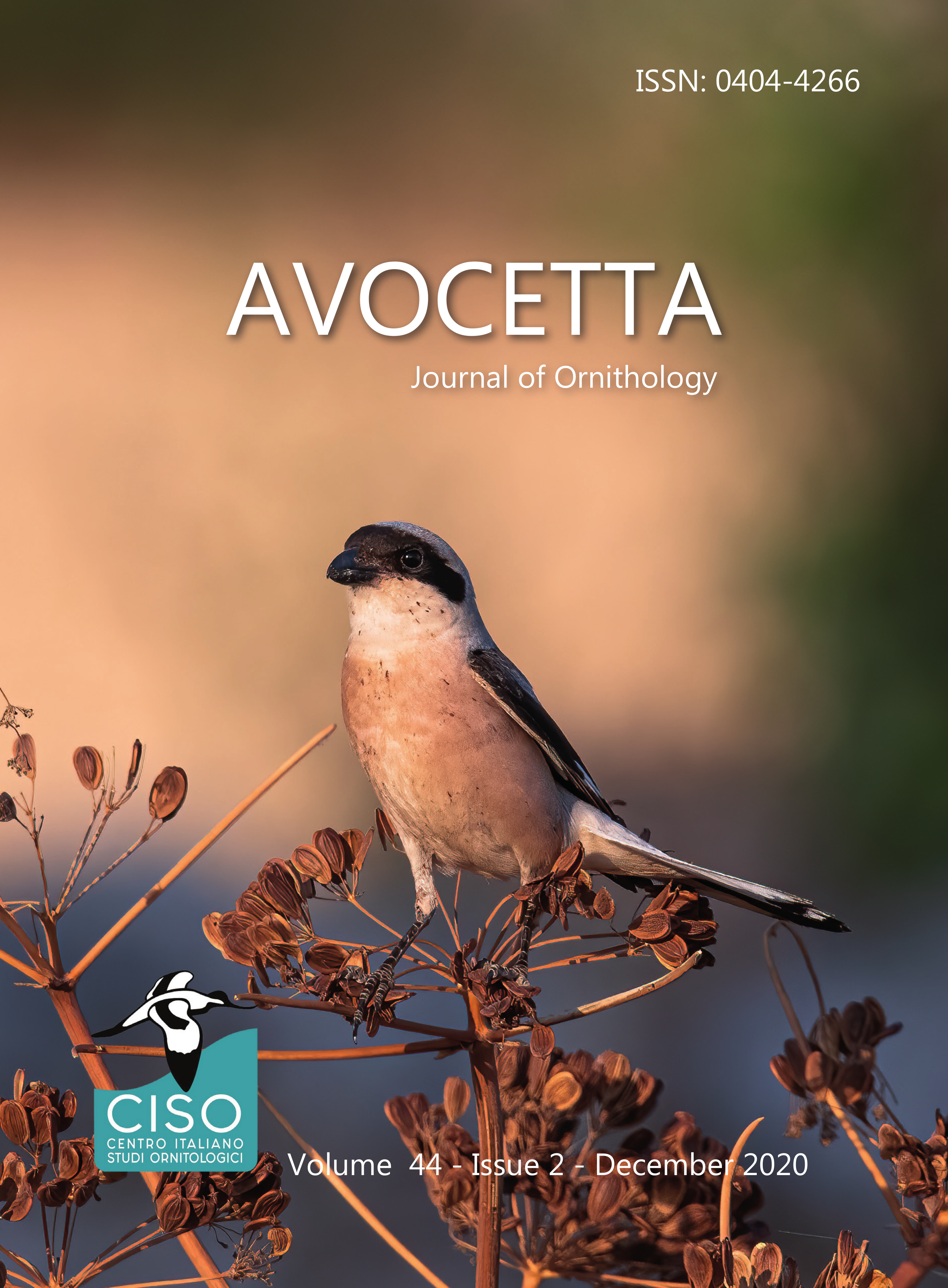
Volume 44 - N. 2
December 2020
Avocetta
Volume 44 - N. 2
Volume 44 - N.2, December 2020
-
Editorial - The times they are a-changin’
Davide Dominoni
-
Nesting ecology of Lesser Grey and Woodchat Shrikes in Apulia, southern Italy
Gianpasquale Chiatante
-
Combined use of radar and mist net trapping to detect species composition of nocturnal migrants
Ivan Maggini, Giuseppe Cortone, Carlo Catoni and Giacomo Dell’Omo
-
Monitoring of a community of nesting birds in an agro-ecosystem with high environmental heterogeneity
Roberto Pollo
-
Short note - First Record of Eurasian Spoonbills Platalea leucorodia feeding on Branchiopoda in a temporary wetland
Salvatore Surdo
-
Short note - Sepia cuttlebones pecked by birds along a Mediterranean beach: patterns, frequency and a possible conservation implication
Corrado Battisti
-
Retraction letter: “Quantifying the global legal trade in live CITES-listed raptors and owls for commercial purposes over a 40-year period”
Connor T. Panter, Eleanor D. Atkinson & Rachel L. White
-
Forum - Conservation Evidence Do the weaknesses and strengths of experts and local volunteers affect the conservation actions focused on nesting plovers? Constructive considerations from the Italian beachfront line
Corrado Battisti, Marco Gustin, Alessandro Polinori
-
Bird news - December 2020
Gaia Bazzi (ed.)
-
Book reviews - December 2020
Roberto Ambrosini and Benedetta Catitti

